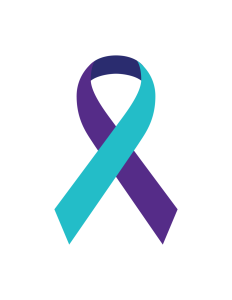Watch this short video. It won’t take long. I’ll wait…
Nothing like an uplifting video to encourage you, right? This one just misses all the “uplifting” parts and gives statistics. The video is only looking at data from 1999 through 2016, so the last four years aren’t included. Even more importantly, the last 7 months aren’t included. Did you catch the implication though?
Rarely is suicide caused by just one thing.
There are usually multiple contributing factors. Did you catch those from the video? Let’s consider each of these in light of a pandemic.


- relationship problems—I am sure that no one is experiencing any of those during the pandemic. HA! How many couples do you know of that have split or are getting COVID divorces right now? My list has 3, and I don’t know that many people!
- substance abuse—have you driven past a liquor store lately? If you think their business fell off, you’d be mistaken. In fact, a March news piece by KSDK started this way: “One way Americans are coping with the new coronavirus? Booze. U.S. sales of alcoholic beverages rose 55% in the week ending March 21”. It is true that some people were stocking up in anticipation of the stay-at-home order/apocalypse, but 55% is a lot!
- recent crisis—I can’t think of any recent crisis…can you?
- job loss—when the economy was shut down, there were layoffs, changes in job descriptions, and more Zoom meetings than you could shake a stick at. This contributed to…
- financial stress—as if not knowing what to do all day after getting laid off wasn’t bad enough, there was the additional burden of still making ends meet. The reality is that some of us are poor planners and made additional investments in toilet paper and alcohol (see #2 above). The magnitude of the scarcity of items is astounding and causes stress on its own. Add to that the inability to pay for basic groceries, housing, and fuel, and we’re a pretty stressed community.
All joking aside, what do we do?

- Identify and support people at risk of suicide.
- Teach coping and problem-solving skills to help people manage challenges with their relationships, jobs, health, or other concerns.
- Offer activities that bring people together so they feel connected and not alone.
- Connect people at risk to effective and coordinated mental and physical healthcare.
That’s a really nice list, but none of those are specific, actionable items. How does one “support people at risk of suicide”? Which coping mechanisms should we be teaching, and what is child appropriate when dealing with kids?
During September, we’ll focus on actual actions we can take individually and as a community. And true to form, I’ll try to introduce all of these things with a bit of levity. It’s a hard subject; unpleasant and dark. It needs to be talked about though. There are many indications that being open about mental health is healthy.
Here’s your first lesson:
Men are more likely to die by suicide than women, but women are more likely to attempt suicide. (That’s right. We’ve found the one aspect where men are better!) Men are more likely to use more lethal methods, such as firearms or suffocation. Women are more likely than men to attempt suicide by poisoning. However, all genders, ethnic groups, and ages are at risk. If you’re trying to identify if someone is at greater risk, here are some possible indicators. The person:
- has attempted suicide in the past.
- suffers from depression and other mental health disorders.
- has a history of substance abuse.
- has a family history of suicide or substance abuse.
- has experienced physical or sexual abuse.
- has been in jail or served a prison sentence.
- experiences a prolonged medical illness.
- is between 15-24 years of age or over 60.
Obviously, a person might have experienced one or two of these and not currently be at risk of suicide. However, when evaluating who might need a mental health check during this pandemic, a person with some of these might be the best place for you to start making your calls, sending your emails, hunting for stamps for archaic letters, and planning your appropriately distanced in-person visits. Incidentally, staying connected and asking about the mental health of your friends and family is one way to support those who are at risk of suicide. More about that and more next week.